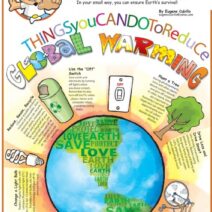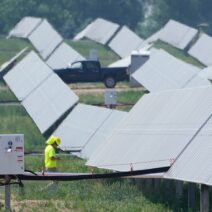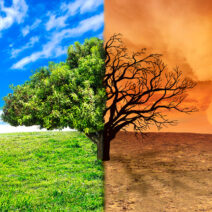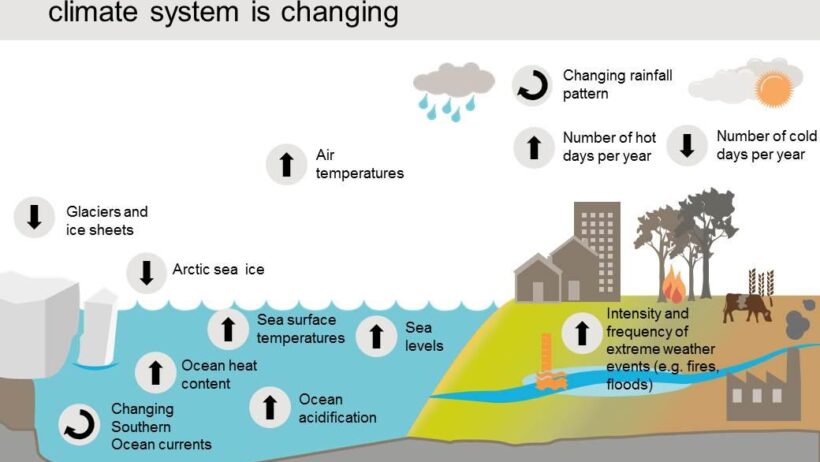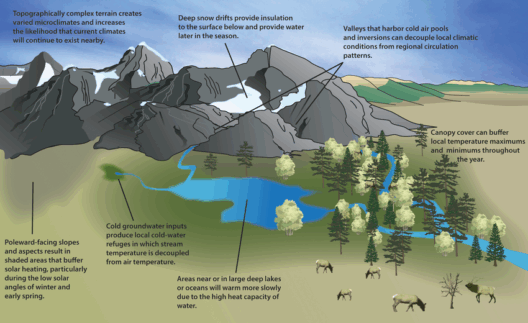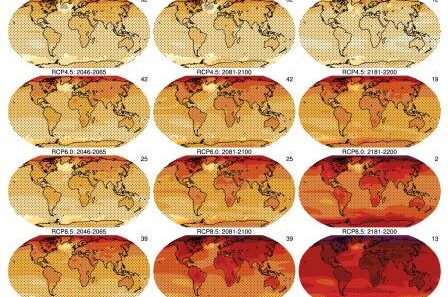Global warming has become a defining issue of our time, creating a complex web of environmental challenges that reverberate across the planet. Analogous to a precariously balanced domino effect, the escalation of one element can spark a cascade of consequences, further complicating the already intricate interplay of natural systems. To truly grasp the phenomenon, it is vital to dissect each link in this chain reaction.
At its core, global warming is driven by the increase of greenhouse gases—such as carbon dioxide, methane, and nitrous oxide—in our atmosphere. These gases act like a thickening blanket, trapping heat from the sun and raising the planet’s average temperature. This escalating warmth is akin to an unseen tide slowly rising in an ocean, eroding the shores of stability we once relied upon.
The ramifications of rising temperatures are numerous and multifaceted. One of the most immediate consequences is the melting of polar ice caps and glaciers. As warm air diffuses across the Earth’s surface, it induces a thermal response in these frozen realms, awakening them from their deep slumber. This melting bids farewell to ancient ice sheets that are repositories of climatic history, contributing to rising sea levels that threaten coastal communities around the globe.
As the ocean absorbs excess heat, it leads not only to thermal expansion but also to the phenomenon of ocean acidification. When carbon dioxide dissolves in seawater, it forms carbonic acid, jeopardizing marine biodiversity. Coral reefs, often referred to as the “rainforests of the sea,” are particularly vulnerable. The symbiotic relationship between corals and algae, which imparts their vibrant colors, begins to fray as temperature surges and acidity rises. Whole ecosystems are at risk of collapse, casting shadows on the myriad species that depend on these underwater citadels.
Moreover, the warming atmosphere is notorious for amplifying the intensity and frequency of extreme weather events. Heatwaves become scorching infernos, storms morph into sinister blusters, and droughts drag parched lands into a desolate embrace. As nature unleashes her fury, the consequences ripple through human society, debilitating agriculture and threatening food security. The consequences of one entity’s struggle lead to the difficulties of another, as the specter of hunger looms larger with each erratic season.
These cascading effects do not discriminate; human health hangs in the balance as well. Rising temperatures create optimal breeding grounds for infectious diseases, which flourish in fluctuating climates. The increased prevalence of vector-borne illnesses, such as malaria and dengue fever, is a stark reminder that our interconnectedness with nature impacts our very survival. This predicament becomes even more pronounced in vulnerable populations, where access to healthcare services is limited, further compounding the stakes.
As global warming tightens its grip, the struggle for freshwater resources intensifies. Melting glaciers once supplied vital water sources to millions, but as they shrink, so too does the availability of this precious resource. Conflicts emerge over dwindling supplies, illustrating that water scarcity can escalate into geopolitical tensions. The once-crystalline streams and rivers transform into sources of strife, igniting unrest in communities grappling with their livelihoods and basic existence.
A crucial aspect of the climate crisis is not just the environmental degradation we can observe, but also the existential threats that linger in the background. Ecosystems, which have evolved over eons, are often unable to adapt swiftly enough to the relentless pace of climate change. The loss of biodiversity symbolizes a misstep in the dance of life, as myriad species vanish, leaving rippling impacts on ecological relationships and functions.
Yet, the narrative of global warming is not exclusively one of doom and despair. It beckons us to rethink our relationship with the Earth. Humanity stands at a crossroads, with the potential to forge a new path toward sustainability. Innovations in renewable energy, conservation strategies, and sustainable agriculture present opportunities to pivot away from the destructive economic models of yesteryears.
Collective action is paramount. Individuals, communities, businesses, and nations must unite in addressing the climate crisis with urgency. It is a monumental task that necessitates profound systemic changes, but the reports of victory in various corners of the globe showcase that transformation is possible. Grassroots movements amplify essential dialogues, while scientists innovate to develop techniques that can sequester carbon and employ alternative energy sources.
The metaphor of the domino effect exemplifies the intricate relationships within our planetary framework. Every action—be it conservation efforts or sustainable policies—has the potential to trigger positive outcomes. For instance, reforestation initiatives can help sequester carbon, stabilize soils, cultivate biodiversity, and enhance local livelihoods. Each restored tree stands as a new domino, ready to tip and cascade additional benefits across the landscape of environmental health.
Indeed, the equipment of our skillset for combating global warming lies in our ability to acknowledge its multifarious connections. As we understand the chain reaction that our climate can provoke, we must remember that the turning of every domino could either lead to devastation or new beginnings. The mantle is now upon us to foster a future where global warming is mitigated by deliberate, informed actions that lead to restoration and rejuvenation, rather than further reliance on declining resources.
